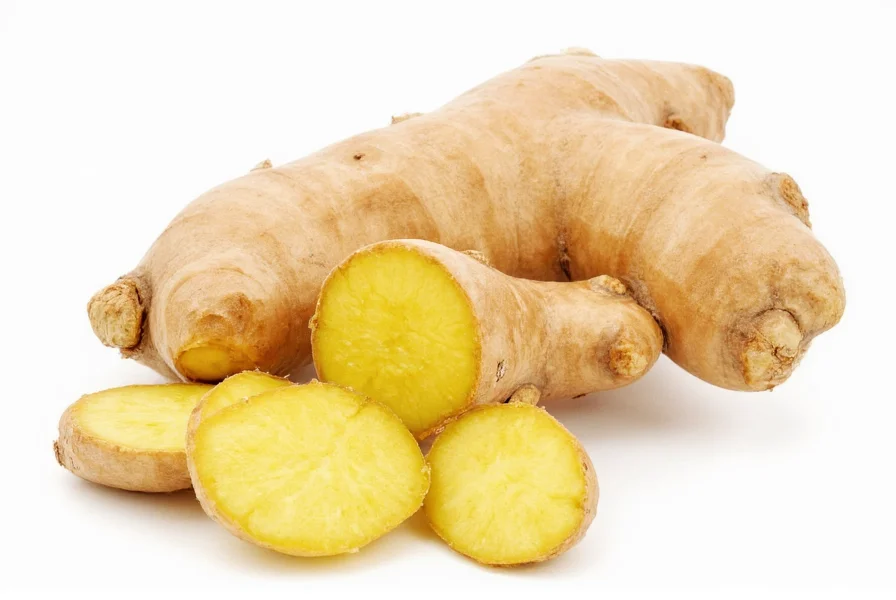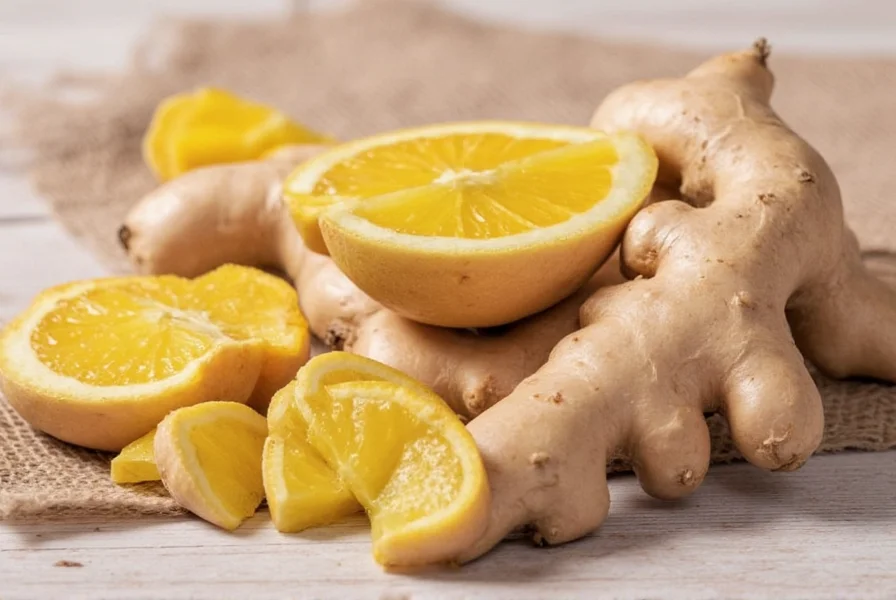For centuries, ginger has been valued across traditional medicine systems for its therapeutic properties. Modern research continues to validate many of these historical uses while uncovering new applications for this versatile root. Understanding the specific mechanisms and evidence behind ginger's health effects helps consumers make informed decisions about incorporating it into their wellness routines.
The Science Behind Ginger's Active Compounds
Ginger's health-promoting properties primarily come from bioactive compounds like gingerols, shogaols, and zingerone. These compounds work through multiple physiological pathways:
| Compound | Concentration in Fresh Ginger | Primary Health Effects |
|---|---|---|
| Gingerols | 3-6 mg/g | Anti-inflammatory, antioxidant, nausea relief |
| Shogaols | 0.5-1.5 mg/g | Pain reduction, enhanced bioavailability |
| Zingerone | 0.1-0.3 mg/g | Digestive support, antioxidant activity |
These compounds demonstrate particularly strong activity against inflammatory pathways. A 2021 meta-analysis published in Nutrients found that ginger supplementation significantly reduced markers of inflammation including C-reactive protein and interleukin-6 in clinical trials.

Evidence-Based Health Benefits of Ginger Root
Nausea and Digestive Support
Ginger's most well-documented benefit is its effectiveness against various forms of nausea. Multiple systematic reviews confirm ginger's efficacy for:
- Morning sickness during pregnancy (typically 1g daily)
- Post-operative nausea
- Chemotherapy-induced nausea
- Travel sickness
The mechanism involves ginger's ability to accelerate gastric emptying and modulate serotonin receptors in the digestive tract. For digestive issues like bloating and indigestion, consuming ginger tea 20-30 minutes before meals may improve symptoms.
Inflammation and Pain Management
Research on ginger for osteoarthritis shows promising results. A randomized controlled trial in Arthritis & Rheumatism found that participants taking 255 mg of ginger extract twice daily experienced significantly less knee pain during standing compared to placebo.
Ginger's anti-inflammatory effects extend to exercise-induced muscle pain. Studies indicate that regular ginger consumption may reduce muscle soreness by 25% following intense physical activity. The recommended dosage for pain management typically ranges from 500-2000 mg of ginger extract daily.
Cardiovascular Health Support
Emerging research suggests ginger may support heart health through several mechanisms:
- Modest reduction in blood pressure (average 8 mmHg systolic)
- Improvement in lipid profiles by reducing LDL cholesterol
- Antioxidant protection against oxidative stress
A 2020 review in Phytotherapy Research concluded that ginger supplementation significantly improved multiple cardiovascular risk factors, though researchers noted longer-term studies are needed.
Practical Applications: How to Incorporate Ginger Daily
Understanding how much ginger to consume daily helps maximize benefits while minimizing potential side effects. Here's a practical guide:
- For general wellness: 1-1.5 grams of fresh ginger (about 1/2 inch slice) in tea or cooking
- For nausea relief: 1 gram of ginger (in capsule, tea, or candied form) when symptoms begin
- For inflammation management: 1.5-2 grams of ginger extract daily, preferably standardized to 5% gingerols
When selecting ginger products, look for those with verified gingerol content. Fresh ginger generally contains higher concentrations of active compounds than dried forms, though dried ginger offers more concentrated shogaols.

Safety Considerations and Potential Interactions
Ginger is generally safe for most people when consumed in food amounts. However, certain populations should exercise caution:
- People taking blood thinners like warfarin should consult their doctor before using therapeutic doses
- Those with gallstone disease may experience increased bile production
- Some individuals report mild heartburn with high ginger consumption
The maximum recommended daily intake is 4 grams for adults. Pregnant women should limit intake to 1 gram daily for nausea relief and consult their healthcare provider before regular use.
Conclusion: Evidence-Based Ginger Benefits
Ginger's health benefits are supported by growing scientific evidence, particularly for digestive health, inflammation reduction, and nausea management. While not a miracle cure, incorporating moderate amounts of ginger into your diet offers a natural approach to supporting several aspects of wellness. As with any supplement, consistency matters more than high doses—regular consumption of 1-3 grams daily provides the most documented benefits without significant risk for most healthy adults.
Frequently Asked Questions
What is the most effective way to consume ginger for inflammation?
For inflammation management, research suggests consuming 1.5-2 grams of ginger extract daily provides optimal benefits. This can come from fresh ginger (about 1 inch root), standardized supplements, or strong ginger tea made by simmering fresh ginger for 10-15 minutes. Combining ginger with black pepper may enhance absorption of its active compounds.
How quickly does ginger work for nausea relief?
Ginger typically begins working within 20-30 minutes when consumed for nausea relief. Studies show peak effectiveness occurs about 1 hour after consumption. For best results, take 1 gram of ginger (in any form) at the first sign of nausea. Pregnant women often report symptom improvement within 30 minutes when using ginger for morning sickness.
Can ginger help with weight loss?
While ginger isn't a weight loss miracle, research indicates it may support metabolic health. A 2019 review found ginger supplementation associated with modest reductions in body weight, waist-to-hip ratio, and insulin resistance. Ginger appears to enhance thermogenesis and fat oxidation, but should be viewed as a complementary approach alongside diet and exercise rather than a primary weight loss solution.
Does cooking ginger reduce its health benefits?
Cooking transforms but doesn't eliminate ginger's beneficial compounds. Heating converts gingerols to shogaols, which have higher bioavailability and different therapeutic properties. While some heat-sensitive compounds decrease, others increase. For maximum benefit diversity, include both raw and cooked ginger in your diet—use fresh ginger in smoothies and cooked ginger in stir-fries or teas.
How long does it take to see benefits from regular ginger consumption?
For digestive benefits and nausea relief, effects may be noticeable within hours or days. For chronic inflammation or pain management, most studies show significant improvements after 4-6 weeks of consistent daily use. Cardiovascular benefits typically require 8-12 weeks of regular consumption. Individual responses vary based on metabolism, health status, and the specific condition being addressed.











 浙公网安备
33010002000092号
浙公网安备
33010002000092号 浙B2-20120091-4
浙B2-20120091-4